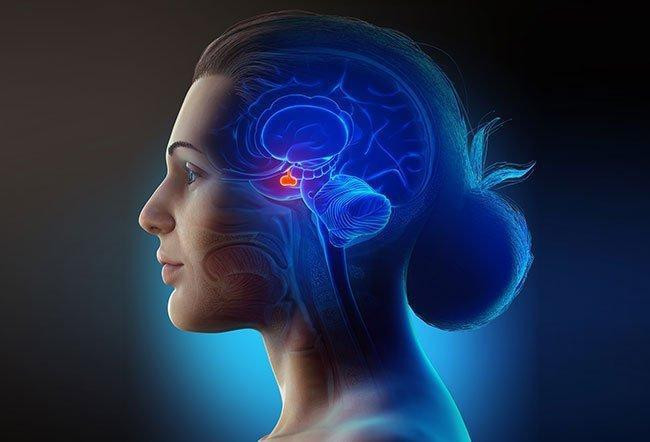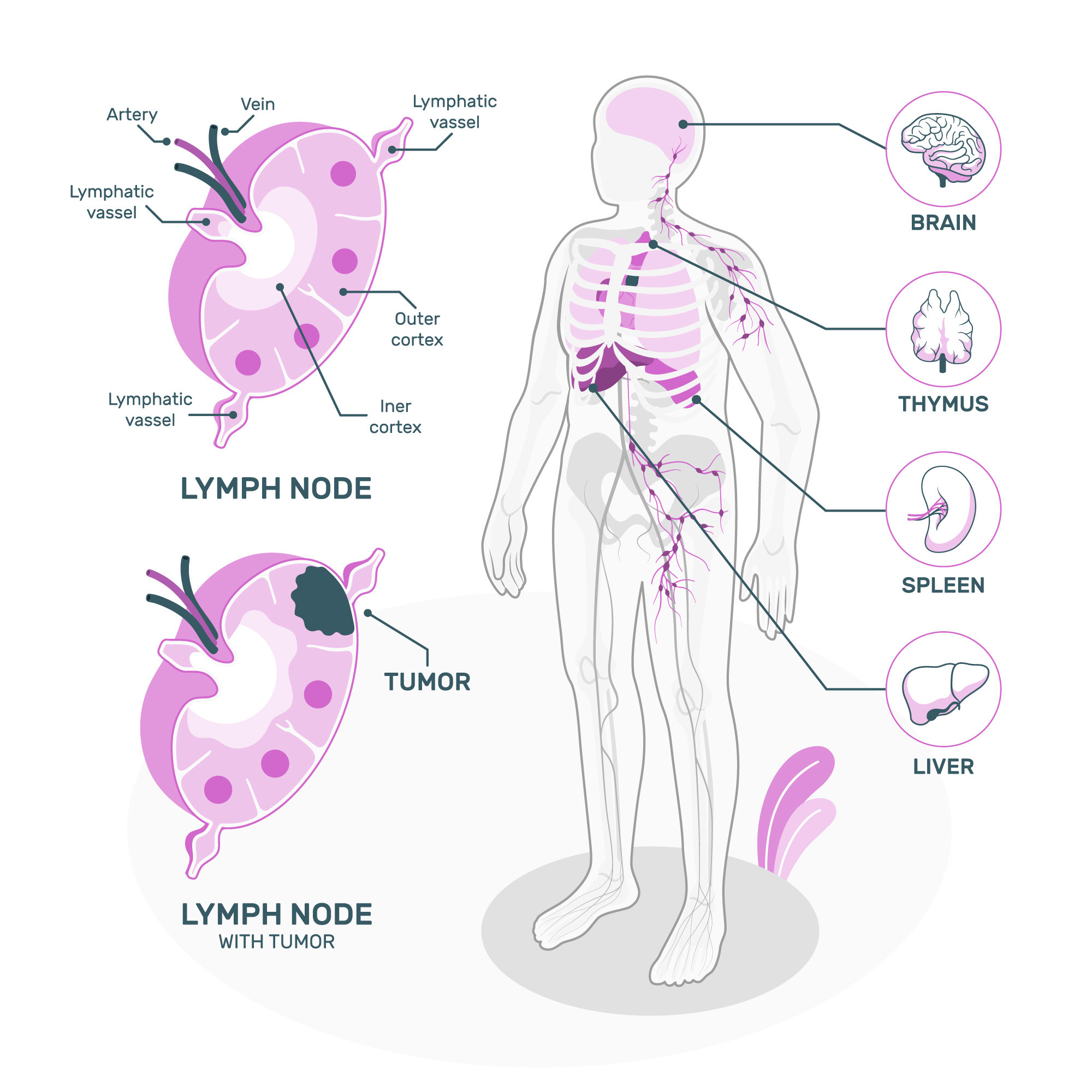Definition
A tumor is an abnormal growth of cells. Unlike malignant tumors, benign tumors do not invade nearby tissues or spread to other body parts. Generally, benign tumors are not harmful. Pressing on blood vessels or nerves can make them dangerous. The epithelium is the body's outermost tissue that protects the skin and internal organs.
Causes
The exact cause of benign tumors is still unknown. In the case of benign epithelial tumors, the cells in the body divide and grow excessively. Normally, the body carefully maintains a balance between cell division and development. When old or damaged cells pass on, they are replaced with new, healthy ones. However, in the case of tumors, the dead cells remain in place and continue to divide, leading to the formation of a tumor.
Benign tumors differ from malignant tumors because they cannot spread to surrounding tissues or other body parts.
Risk factor
While the cause of benign epithelial tumors remains unknown, several factors can cause or increase the risk factor for benign tumors, namely:
- Environmental factors, such as toxins, radiation, or chemicals
- Inflammation or infection
- Diet
- Local injuries or wounds
- Stress
- Genetics
Benign epithelial tumors can occur at any age, from children to the elderly. However, the incidence is highest in adults.
Symptoms
Benign epithelial tumors have the following signs:
- Slow-growing
- Has a firm and flat border
- Does not grow into surrounding tissues or organs
- Does not invade other parts of the body
Benign epithelial tumors can also affect the surrounding organs, resulting in other symptoms such as:
- Chills
- Discomfort or pain
- Tiredness
- Fever
- Loss of appetite
- Profuse sweating at night
- Weight loss
The most common benign epithelial tumors are adenomas and papillomas. Adenomas are benign tumors in the epithelial layer surrounding glands, organs, and other internal structures. Examples of adenomas are polyps that grow in the colon and liver. Adenomas can also develop in the kidneys (adrenal glands), pituitary (a part of the brain that regulates hormones), and thyroid gland in the neck.
Meanwhile, papillomas are tumors that develop from epithelial tissue and are shaped like fingers. Papillomas can develop on the skin, cervix, mammary ducts, and the inner eyelid (conjunctiva) lining. These tumors can be caused by direct contact with the Human Papillomavirus (HPV) virus. Some types of papillomas disappear on their own. In some instances, surgery is required to rule out the possibility of cancer.
Diagnosis
Doctors may conduct a range of tests to diagnose benign epithelial tumors. The key is to differentiate between benign and malignant tumors. These tests can only be done in a laboratory. The doctor will usually ask about your medical history and complaints, followed by a physical examination.
Furthermore, the doctor may perform tests such as:
- Computed tomography scan (CT scan)
- Magnetic resonance imaging (MRI) which uses a magnetic field
- A mammogram for breast examination, similar to an X-ray
- Ultrasound which uses sound waves
- X-rays
Normally, benign tumors have a capsule that separates them from the surrounding tissues. The doctor may also run blood tests to look for tumor markers. Also, the doctor may perform a biopsy (take tissue) to examine under a microscope. The doctor can then diagnose the tumor as benign or malignant. This biopsy can be done quickly and safely on certain areas of the body, such as tumors in the colon, small intestine, and stomach.
Doctors may also perform endoscopic examinations to look for tumors in the nose, stomach, small intestine, and so on. Endoscopy involves inserting a tube with a camera at the end into the nose, mouth, stomach, or other tubes that can be reached from outside the body.
Management
Not all benign epithelial tumors require treatment. In many cases, the tumor needs to be monitored for some time. Polyps in the colon or moles on the skin can suddenly develop into malignant tumors, but they may not require treatment.
Typically, treatment of benign epithelial tumors can be handled in the following ways:
- Wait-and-watch. If your tumor is small and not causing symptoms, your doctor may ask you to return for another check-up after a few months. In such cases, the treatment may cause more harm than good. Some types of tumors do not even require any treatment
- Medications. Medication gels and creams can help remove benign tumors. Steroids can also be used to reduce the number of tumors that cause symptoms like pain or blockage
- Surgery. The tumor is usually removed via endoscopy. The endoscopy may result in a wound that heals quickly or leaves no wound. However, skin tissue biopsies usually take several weeks to heal, and sometimes require specialized wound care such as bandage changes and wound closure
- Radiation. If surgery cannot safely treat the tumor, the doctor may perform radiation therapy to shrink the tumor or prevent it from growing larger
The bigger the surgery, the longer it will take for the recovery. For example, if the tumor is in the pituitary (which is inside the skull), you may need surgery. You may also need speech therapy, occupational therapy (to ensure daily function), and physiotherapy (physical therapy) to deal with problems caused by the tumor and surgery.
Healthy living and eating habits can prevent health problems like some types of cancer, but they cannot treat tumors alone. Tumors cannot be treated with alternative medicine or herbs.
Complications
Complications of benign epithelial tumors include enlargement of the tumor to the point where it blocks blood vessels and nerves. In addition, these tumors can turn malignant and require intensive therapy.
Prevention
Preventing benign epithelial tumors is difficult due to the variety of causes. Tumors such as breast tumors can be hereditary (genetic). Meanwhile, some types of tumors are caused by viral infections, so exposure to viruses must also be avoided, such as not touching people infected with the virus.
When to see a doctor?
You should see a doctor if you notice unusual skin growths or other symptoms like fever, fatigue, unexplained weight loss, etc. These problems can have a variety of causes, but one possibility is a benign epithelial tumor. The sooner it is diagnosed, the sooner you can begin treating the symptoms, especially if the tumor is discovered to be malignant. You may be asked to undergo examinations related to your illness so the doctor can accurately diagnose the disease.
Looking for more information about other diseases? Click here!
- dr Nadia Opmalina
Stuart, A., & Ambardekar, N. (2021). Benign Tumors: Types, Causes, and Treatments. WebMD. Retrieved 13 June 2022, from https://www.webmd.com/a-to-z-guides/benign-tumors-causes-treatments
Thomas, T. (2022). Benign Tumors: Causes, Types, Symptoms, Diagnosis, Treatment. Healthline. Retrieved 13 June 2022, from https://www.healthline.com/health/benign
Tumor List | SEER Training. Training.seer.cancer.gov. Retrieved 13 June 2022, from https://training.seer.cancer.gov/disease/categories/tumors.html












